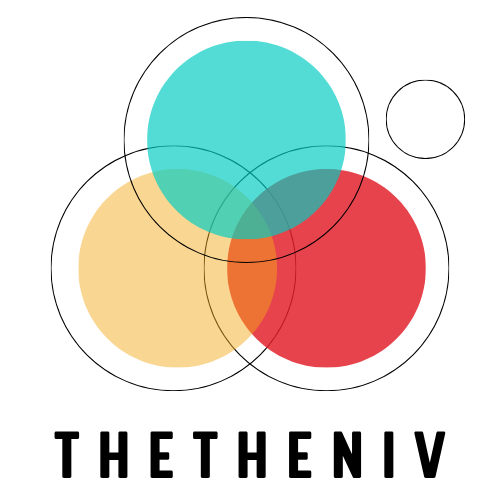Anúncios
Growth tips can feel overwhelming, but what if one small change this week shifted your path toward a better life?
2025 is timely: new routines, clearer research, and tools make it easier to apply simple, evidence-informed actions now. You’ll get quick, practical guidance on personal growth and the mindset that supports steady progress. Expect ideas you can try today, not promises of instant success.
This checklist covers sleep, brief meditation, daily gratitude, greenspace time, SMART goals, small experiments, and accountability. Research shows short mindfulness sessions boost attention (Mrazek et al., 2013). Adults benefit from 7+ hours of sleep (CDC). Gratitude and nature exposure link to better well-being (Twohig-Bennett et al., 2018).
You’ll see options, not prescriptions. Use these ways as guidance: measure results, adapt, and consult experts when needed. Invite supportive people, keep things low risk, and aim for steady momentum—better quality of life, not perfection.
Set your foundation: Mindset and values for sustainable growth
Begin with what matters most to you—then shape simple weekly actions around those priorities. Clarifying values makes choices easier and keeps small changes aligned with your life.
Anúncios
Clarify what matters: Identify values and purpose
List 5–7 core values. Then rewrite each as a choice you can try this week (for example, if purpose matters, block 30 minutes for reflective writing).
Practice self-compassion and reframe setbacks
When things go off track, use this script: “This is hard. Hard is human. What’s one small adjustment I can try next?”
Anúncios
Record what you tried, what happened, and one tiny change to test. Treat setbacks as data, not identity statements.
Adopt a growth mindset and take small, frequent risks
Growth mindset means believing skills improve with effort and feedback. Try one safe risk weekly: ask a question in a meeting, share a draft early, or test a new tool.
- Set a short learning target for each challenge.
- Journal one paragraph daily on how actions map to your purpose.
- Revisit values every quarter and adjust as life changes.
To read more about how to set the right mental foundation, see set the right foundation.
Protect your energy: Health habits beginners can stick with
Small, regular choices about sleep, movement, and food add up to steady energy you can count on.
Prioritize sleep quality and consistency
Most adults do best with about 7+ hours nightly to restore focus and mood (CDC). Set a consistent bedtime and wind-down routine.
Make sure you reduce late caffeine and alcohol, keep the room cool and dark, and use naps strategically when nights are short. Consult a clinician if sleep problems persist.
Move regularly: Strength, cardio, and active breaks
Schedule three 20–30 minute sessions weekly that mix strength and cardio. Add 2–3 brisk 5-minute walks each work day to break up sitting.
These low-friction moves support attention and steady energy, and they fit into busy schedules without a gym membership.
Fuel wisely: Simple nutrition swaps and hydration
Try one small swap per week: baked or air-fried instead of fried, and replace one sugary pop a day with water or unsweetened tea.
Carry a refillable bottle and set two refill checkpoints during your work time to keep intake steady.
Reduce overwhelm with short daily gratitude
Write two specific things you’re grateful for every day. This under-two-minute habit links to improved well-being and clearer focus.
Get outside: Leverage greenspace for mood and focus
Plan a 10–20 minute walk in a park or tree-lined street most days. Greenspace exposure is tied to better health and refreshed attention.
- Stack habits: pair new actions with existing routines (stretch while coffee brews, gratitude after brushing teeth).
- Track progress: use a simple weekly checklist for sleep nights, movement sessions, swaps made, gratitude entries, and outdoor minutes.
- Personalize: if you work shifts or care for others, protect a consistent wind-down and adapt naps; consult your clinician when needed.
Energy management supports growth—steady energy improves follow-through and increases your odds of long-term success.
Own your time: Focus, routines, and tools that reduce friction
Take control of your day with a few reliable habits that simplify how you work. Start small, test one change a week, and measure what helps you get more done with less effort.
Build a realistic morning routine you’ll actually use
Begin with a 15–30 minute routine you can keep on busy days. Include one planning step, one health step, and one focus step—review your top task, hydrate, then do 5 minutes of breathing.
Schedule deep work and batch shallow tasks
Block 60–90 minutes for deep work at your peak energy. Batch email and admin into one or two short windows to cut context switching.
Limit passive screen time to free up attention
Set a daily cap (30–45 minutes) for passive scrolling. Move entertainment apps off your home screen so you default to intentional choices.
Try brief meditation to improve attention and reduce stress
Add a 5–10 minute meditation mid-morning or mid-afternoon. Research shows short mindfulness practice can improve attention and reduce mind wandering.
- Simple steps checklist: define one most important task, protect one deep block, finish with a 3-minute review for tomorrow.
- Make sure meetings have an agenda and desired outcome; decline or shorten ones that don’t align with priorities.
- Replace passive commuting scrolling with a focused podcast episode to learn without adding hours to your day.
- Keep tools light: calendar for blocks, one to-do list, and one notes app. Leave short buffers between meetings to reset.
Reassess weekly: note which blocks worked and which didn’t, then adjust next week to support steady growth.
Growth tips for relationships, communication, and support
Simple weekly conversations can prevent misunderstandings and help you move toward shared goals.
Use family or team check-ins to align goals and roles
Schedule a 20–30 minute weekly check-in so people know priorities and what support is needed.
Use a short agenda: wins, what’s working, what’s stuck, and one commitment each person will make.
- Review calendars, roles, and blockers so tasks are clear.
- Redistribute work during busy seasons to avoid overload.
- Set norms for responsiveness, such as acknowledging messages within one business day.
Learn productive conflict and repair: Apologize well
When tensions rise, call a brief pause and agree on one concrete next step. Come back after emotions cool.
Practice respectful arguing: focus on behaviors, not judging others as people.
Apologize clearly: own the impact without “ifs” or excuses. For example, say, “I’m sorry I missed the deadline and created extra work. I’ll update the plan and confirm new dates.”
Protect time with close people and celebrate small wins together. Strong relationships are a key way to sustain growth because they provide feedback, encouragement, and accountability.
Learn faster: Simple ways to upgrade your skills in 2025
Make deliberate, bite-sized learning a daily habit so knowledge compounds without overwhelming your schedule.
Read purposefully: One book a month tied to your goals
Choose one book per month that aligns with a current goal, such as negotiation or habit formation. Block two 20-minute sessions each day to finish steadily without cramming.
After you finish, write five bullet points and one action you will test this week. Applying ideas quickly cements learning.
Use podcasts and microlearning during commutes
Turn idle minutes into skill development. Pick a focused podcast series for 4–6 weeks (for example, leadership or communication) and listen on commutes or chores.
- Try 10–15 minute microlearning lessons to fit into a busy day.
- Keep a lightweight learning backlog and rotate topics quarterly.
- Pair each episode or chapter with a short practice at work and track one metric tied to the skill.
- Save highlights to one notes doc so you can review and connect ideas later.
Curate diverse sources and celebrate when a new skill saves time or reduces errors—those wins reinforce continued development.
Step out of your comfort zone: Safe, small experiments you can try
Try one small, safe experiment this week to nudge your habits and widen what feels possible.

Three-step loop: pick a tiny challenge, time-box it for 30–60 minutes, then debrief what you learned — not just whether it “worked.”
- Choose a micro-challenge you can finish in an hour.
- Run it with a clear time limit and one measurable outcome.
- Write one line of insight and one next smallest step.
Examples for this week: attend one local meetup, publish a short post or video, ask a senior colleague one question, or send a 5-minute cold outreach message.
Low-cost creative tries include submitting a 200-word article to a community newsletter, testing a basic landing page, or taking a free online workshop.
- Label discomfort as a sign you’ve entered a new zone; shrink the test until it feels safe enough to try today.
- Invite a friend or mentor to join or observe so you get friendly feedback and reduce isolation.
- Keep consent and ethics front and center—never violate privacy or policies for the sake of a test.
Track experiments with a simple log: date, steps, and one insight. Use a modest risk budget (for example, two tiny bets per week) so exploration fits your routine.
When a test fails, use a growth mindset debrief: what skill did you practice, what would you tweak, and what’s the next smallest try? Confidence usually follows repeated, safe exposures outside your comfort zone.
Turn intentions into outcomes: Goal-setting that actually fits your life
Translate your intention into one focused, value-aligned plan and treat it as an experiment you can refine. Pick a single SMART goal that ties to why it matters to you. This anchors commitment and guides daily choices.
Write SMART goals tied to your values
Be specific: name the outcome, a measurable metric, and a deadline. Note why it links to your values so motivation stays clear. Use the SMART frame to make the goal testable and realistic.
Break big aims into weekly and daily actions
Work backward from your long-term aim to define quarterly, weekly, and daily steps. The smaller the step, the higher the odds you’ll do it on busy days.
Give each step a trigger (a time or place) and a clear finish line so you know when it’s done.
Track progress visibly and celebrate small wins
Use a visible tracker—a wall calendar, habit app, or simple spreadsheet—so progress is obvious. Visibility supports persistence and steady development.
- Celebrate one small win each week to reinforce behavior.
- Review monthly: what moved, what stalled, and which step was too big.
- Share progress with a partner for light accountability and fresh ideas toward success.
Accountability and feedback: Mentors, coaches, and communities
Getting feedback from a coach, mentor, or peer group makes progress clearer and faster. Choose the kind of support that fits your current need—skill practice, mindset shifts, or consistent accountability.
Find the right mentor or coach for your context
Clarify the role: a mentor shares domain experience; a coach helps you explore patterns and create plans. Decide whether you need subject knowledge or facilitation of behavior change.
Vet candidates: review credentials, methods, and sample sessions. Ask about scope, boundaries, and realistic outcomes—ethical coaches avoid promises of instant success.
Try before you commit: request a short, structured trial (for example, three monthly calls) with a clear agenda so both people respect time and expectations.
Join a community that practices what you want to improve
Pick groups where members actively practice the behavior you want, such as writing circles, coding meetups, or rehearsal cohorts. Norms and peer feedback pull you forward.
- Share weekly intentions and short debriefs to normalize feedback and remove shame about setbacks.
- Use light structure—agree on confidentiality and respectful boundaries before sharing personal details.
- Tap asynchronous resources like a podcast or office hours from respected practitioners when live access is limited.
Reassess quarterly: check if your coach, mentor, or community still fits your development aims. External support accelerates progress only when paired with your consistent action.
Conclusion
Close with one clear commitment you can protect in your calendar tomorrow. Pick two or three small habits that fit your purpose and block the time to try them.
Treat these actions as experiments: test, measure, and adjust. Use a weekly review to note what moved, what stalled, and one adjustment to try next week.
A brief 5-minute meditation or end-of-day reflection is a great way to lower anxiety and sharpen attention every day. Share progress with a peer, mentor, or coach when you need feedback.
These are practical guides, not guarantees. Write one SMART sentence for a goal, block 20 minutes tomorrow, and begin—your future self thanks you.



